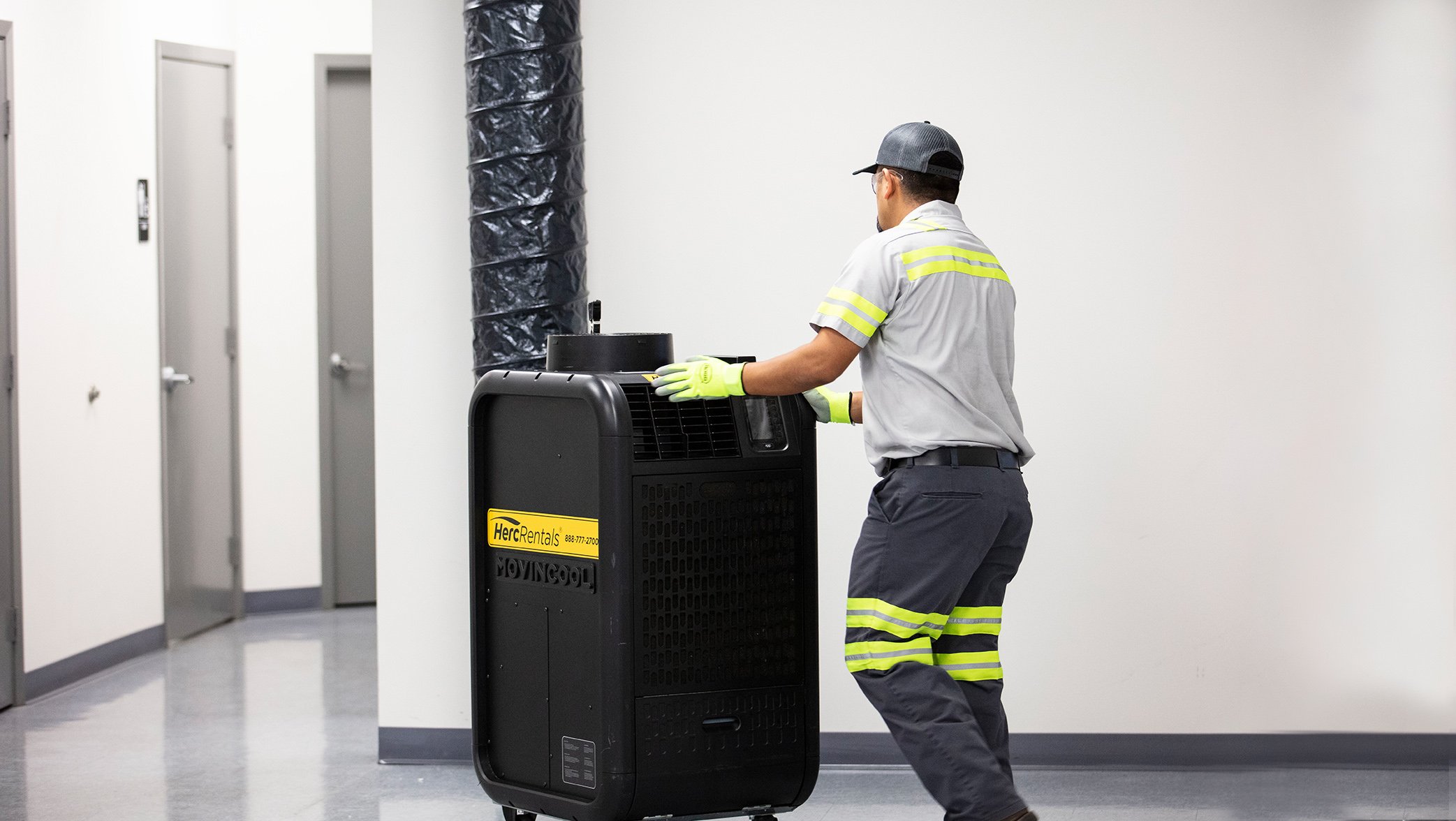If you’re looking for emergency heat relief, a spot cooler may be all you need.
But what are spot coolers, how do they work, and what type of spot cooler do you need?
Spot coolers are designed to provide cool air to smaller areas or, with a multi-unit deployment, can cool larger areas/facilities to keep temperatures within a comfortable range. Spot coolers can be deployed when the existing cooling system unexpectedly fails, as a replacement during scheduled outages, or to provide supplemental capacity should the current system be overwhelmed due to severe extended high heat events. There are two types of spot coolers: air-cooled and water-cooled.
While both are effective, it’s important to understand the operating differences between the two types to ensure the proper spot cooler is selected. Air cooled spot coolers utilize an internal fan to generate a strong flow of air to cool the compressor. This hot air must be vented away from the area being cooled. This is achieved by ducting the hot air through ceiling tiles or a nearby window.
Water cooled spot coolers utilize a steady flow of water through the unit to cool the compressor motor. This requires an intake hose to connect the spot cooler to a water source ― any faucet or hose outlet will work. Then a discharge hose most be run from the spot cooler to a drain (shower, sink, floor drain). Cool water from the tap will enter the spot cooler, circulate through the unit and the now-hot water will be discharged to the drain. Hoses are available in 30’, 60’ and longer lengths, which allows the spot cooler to be positioned well away from the water source and drain.
But how do you decide which unit is right for you?
The most common solution for spot cooling is air-cooled spot coolers. These units provide more options and flexibility for customers. Air-cooled units can be installed quickly anywhere a standard 120V wall outlet is available. Ducting will need to be installed to vent the heated air out of the area being cooled.
Air-cooled is not for every situation, however. Because these units require ductwork, they will not work effectively in certain spaces. This might include areas with very high ceilings, or where ducting cannot be installed for cosmetic reasons or a when there’s a long distance to where the hot air would need to be directed out of the area being cooled. Retail stores and the recent trend of open ceilings at restarants are two examples of where an air cooled spot cooler might not be an effective cooling option.
Water-cooled spot coolers don’t require ducting, so they are ideal for placement in spaces where ducting is not an option. As a bonus, they are very efficient at cooling locations battling high ambient temperatures. When the ambient heat exceeds 100°F, water-cooled units work more efficiently and provide colder air. The disadvantage is they require connection to a water source and a drain.
Some applications to use spot-cooling include:
- Supplementing a building’s main air-conditioning system, balancing temperatures, and cooling hot spots
- Dehumidifying applications to preserve products and enhance comfort and productivity
- Emergency drying and dehumidifying following floods, hurricanes or other disaster
- Cooling older buildings that may lack central air conditioning
- Spot cooling production processes, assembly lines, and warehouses
- Maintaining temperatures in server rooms and data centers
- Cooling tents and temporary structures
To learn more about other temporary air conditioning solutions and other climate control equipment, click HERE.


